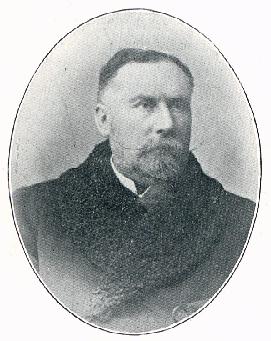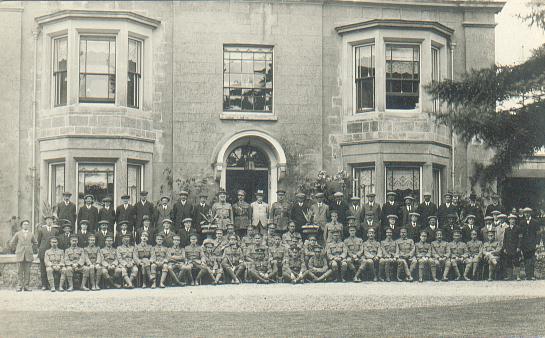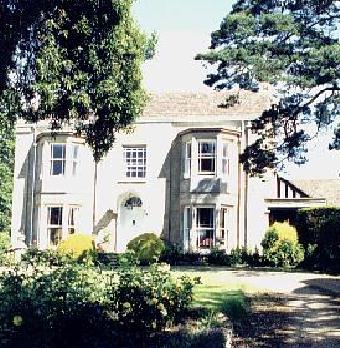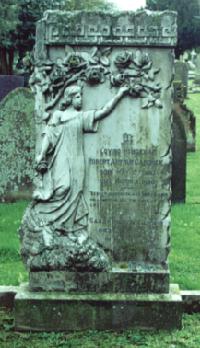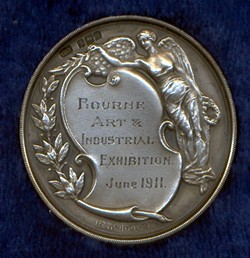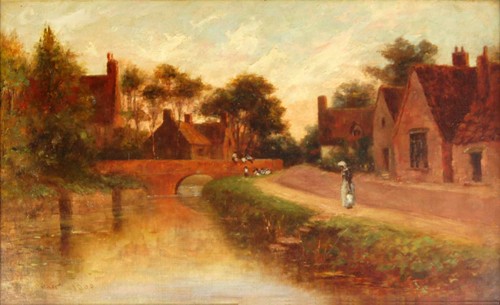Robert Arthur Gardner was a bank manager in Bourne who also earned himself a reputation as a talented painter. He was born and educated at Peterborough where he began his career in banking with the Stamford, Spalding and Boston Banking Co Ltd which later became Barclays Bank, and after working at their Peterborough and Spalding branches, he moved to Bourne in 1884 as chief cashier.
He returned to Peterborough for a spell but was appointed manager of the Bourne branch in 1894, a position he held until 1912 when he retired with 50 years of service to his credit. During this time he lived at Bank House in North Street, now converted for use as offices and occupied by the solicitors Andrews, Stanton and Ringrose, and in contemplation for his retirement, he had obtained a lease on Cawthorpe Hall and subsequently became the owner and this remained his home until he died at the age of 75.
In 1916, he was appointed a trustee of Bourne Charities and during the First World War he also served as president of the Volunteer Training Corps. His interests also extended to the Red Cross, participating in most of their fund-raising functions and he was also one of the local Income Tax Commissioners, a committee member of the Butterfield Hospital and local representative of the Society for the Prevention of Cruelty to Children.
Sport was among his hobbies, particularly cricket, and during his early days in Bourne he had played for and captained the town XI and did not retire from the pitch until ten years before his death. He was also president or vice-president of many other sporting organisations in the district. Evidence of the energy and drive he put into the game is reflected in a news report from the Stamford Mercury on 10th July 1908 about an incident that occurred while still playing at the age of 58. "On Saturday
afternoon", said the report, "a serious accident befell Mr R A Gardner during the
course of a cricket match at Folkingham. Mr Gardner was one of the
players for the Bourne team and was batting, when in attempting to
dodge a ball whilst he was running, he fell on his knee, and to
the consternation of those on the field, was unable to get up
again. The players at once went to his assistance, and it was
found that he had seriously hurt his knee. The local medical
practitioner was away from home, and a telegram was at once
dispatched for Dr Galletly of Bourne. In the meantime, Mr Gardner
was conveyed to the Vicarage and there attended to by Dr Galletly
who arrived in his motor. Mr Gardner was afterwards moved to his
home in the doctor's motor, and on Sunday was visited by Dr Walker
of Peterborough. The knee cap was broken by the fall, but owing to
the swelling of the joint the exact injury could not be definitely
stated." He was also a generous supporter of the Art and Industrial Exhibition staged in Bourne in 1911 and was an exhibitor in the various classes. During his time at Cawthorpe Hall, he made extensive alterations to the property including the addition of the present studio and the installation of gas for heating and cooking. He and his wife Sarah also spent a lot of their time in the gardens which were beautifully kept and where they also played croquet. In 1926, he took one of his usual holidays in the South of France where he was taken ill with influenza that developed into pneumonia and he died at Nice on 2nd March 1926. His body was brought home and buried in Bourne Cemetery after a service at the Abbey Church. His reputation was such that the blinds of all private residences in the town were drawn during the service and business premises were closed. The Stamford Mercury recorded his passing with a tribute to "a typical English gentleman". The report continued: "He was a friend of all sections of the community, irrespective of creed or social position. He was at home in any sphere of life and with any class or age of the community. Whilst religiously a member of the established church and a most regular attendant, he was extremely broad-minded and the members of the Free Churches ever found him a willing and generous supporter. He was an ideal speaker at any function, giving expression to a train of thought in pure English sentences; it is seldom that he spoke without revealing his keen sense of humour. He frequently made puns on his own name and invariably put any audience into good humour." After his death, his wife continued to live at Cawthorpe Hall until she died 17 years later, devoting her final years to the charitable causes previously undertaken by her late husband. They had no children and, according to his wishes, their estate passed to a niece Mrs Ernestine Constance Bourn Dunbar who bought No 4 West Road in 1945. She called it Cawhall and lived there until her death in 1972 when she was buried in the same grave as her uncle and aunt. The Dunbar Room in the Red Hall, which she had restored in Gardner's memory, was named after her. Their grave in the town cemetery is marked by an elaborately carved headstone with the inscription:
Gardner frequently donated his pictures as prizes for Bourne organisations and charities and so many remain in the town in private hands. On the 70th anniversary of his death in 1996, the town's Civic Society held a one-day exhibition of his work at the Red Hall where 40 of his paintings, including some that had been exhibited at the Royal Academy, were brought together for public view. Among them was one of his best-known works that is pictured above, a whimsical self-portrait showing the artist as a large moustachioed man relaxing in an armchair wearing his slippers and reading a newspaper.
See also The R A Gardner art exhibition The Art and Industrial Exhibition of 1911
Go to: Main Index Villages Index |
||||||||||||||||||
